How Do I Find And Use Long Tail Keywords?
Most SEO professionals would like to learn more about how to find long tail keywords to use in their content marketing campaigns. Truly, knowing how to use long-tail keywords as a part of a solid search engine optimization strategy can mean the difference between a successful SEO campaign and one that performs below expectations.
Additionally, SEO professionals who understand how to find long tail keywords with low SEO difficulty even the marketing and advertising playing field, even if they don’t have a big budget. Therefore, the purpose of this article is to introduce readers to the benefits of long tail keywords, as well as to teach them about the difference between long tail keywords vs short tail keywords. Finally, readers will get some easy-to-understand examples of how to use keywords in their writing, as well as how to find long tail keywords to use in their online marketing campaigns.
FACT: The average conversion rate for long-tail keywords is 36%. (Neil Patel)
Long-Tail Keywords Benefits
For most website owners, getting five million page views is the Sangri La of the digital realm. While that may be an understatement, it’s important to address this point upfront. Inexperienced website operators typically don’t understand how to get that kind of traffic. They, therefore, go for keyword phrases that are almost impossible for a new site to rank for in a Google search.
The best way to explain this is by example, using a topic that most people are familiar with: coffee. Five million people a month search Google for the term “coffee.”
Many inexperienced website operators reason that if they use the word “coffee” on their site, they’re going to get a lot of traffic, possibly even five million visitors. To them, five million web searches a month equals their site getting five million visitors.
However, unless they run a website that Google recognizes as an authority in the coffee niche, their website probably won’t make the first page of Google. In fact, if it’s a new site, it’s unlikely that their site will even land on the first 10 pages of a Google search. Certainly, it’s unlikely that their site will get five million views per month. Let’s take a look at a search for coffee:
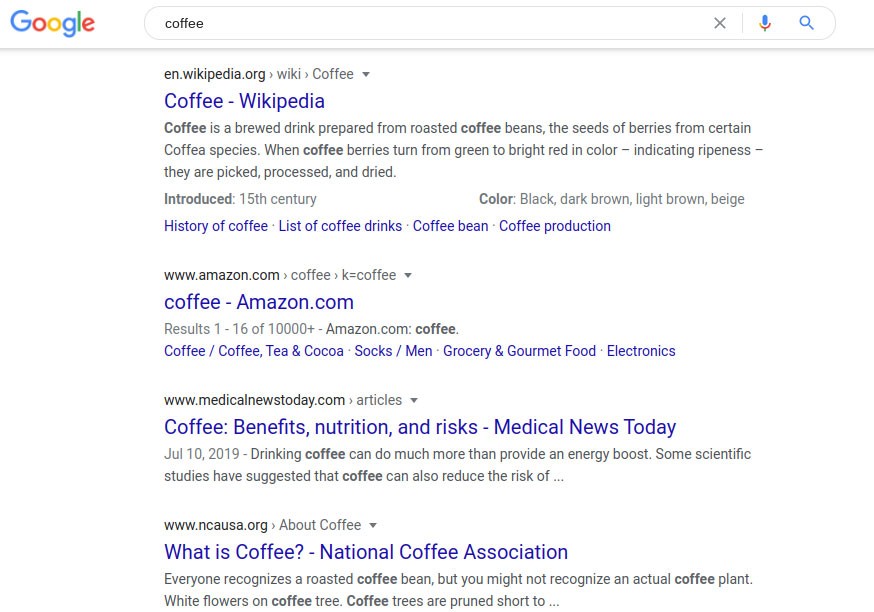
As it stands, the website in the top position on Google for “coffee” is Wikipedia. The next one is Amazon, followed by Medical News Today. Number four is the National Coffee Association. These stats point to the difficulty that most site owners will face when they’re creating their SEO plans.
That’s where long-tail keywords come in. Here’s the ultimate principle behind long-tail keywords. If a website has enough long-tail keywords in the content on its site, that website will eventually get the same amount of traffic that it would get if that website ranked for a more competitive keyword like “coffee.” This principle encapsulates long-tail keywords benefits in a nutshell.
Test your SEO in 60 seconds!
Diib is one of the best SEO tools in the world. Diib uses the power of big data to help you quickly and easily increase your traffic and rankings. We’ll even let you know if you already deserve to rank higher for certain keywords.
- Easy-to-use automated SEO tool
- Keyword and backlink monitoring + ideas
- Speed, security, + Core Vitals tracking
- Intelligently suggests ideas to improve SEO
- Over 500,000k global members
- Built-in benchmarking and competitor analysis
Used by over 500k companies and organizations:
Syncs with 
What is a Long Tail Keywords Example?
Long-tail keywords use a short-tail keyword – in this case, “coffee” – and add information to it to make the search more specific. When people search the web, they actually most often use long-tail keywords to find what they’re looking for.
For example, instead of searching for “coffee,” they search for “coffee drink recipes.”
Other long-tail keywords that include the word “coffee” are keyword phrases, like:
- coffee drink recipe book
- alcoholic coffee drinks
- coffee drink no sugar
- and “coffee drink oat milk”
The keywords in the above bulleted list represent only one long tail keywords example. It’s possible to create long-tail keyword phrases for just about any word that people search on the web. For example, the word “doctors” can become “doctors near me” or “doctors without borders.”
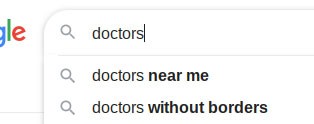
In each case, the long-tail keyword alternative to the more competitive keyword allows people to do more specific searches on the web. These keyword phrases narrow down their web search results because the phrases are more specific.
You Might Also Like
There are millions and millions of websites to choose from. Using long-tail keywords provide Google and other search engines with a filter, which helps to narrow down the number of websites that turn up in a search result.
This makes searching the web easier because in theory, only the websites that deal thematically with the search term in question will come up in the search results. In other words, people who search for “coffee drink recipes” expect to have websites related to coffee drink recipes pull up in the results of their web search. Check out the difference:
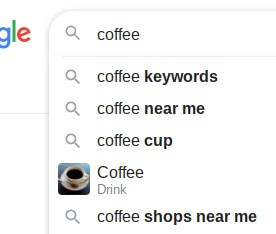
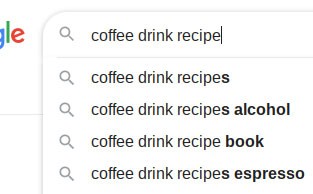
These examples show the difference between long tail keywords vs short tail keywords. In these examples, “coffee” and “doctors” are the short-tail keywords. That is they consist of only one or possibly two words. Long-tail keywords have more words in them that clarify or modify them in some way.
How to Use Long-Tail Keywords
For the website owner, knowing what words or phrases people use to search the web with can help in the content-creation phase. Again, for the sake of clarity, “coffee” will again be used as an example. However, the example this time around will look at long-tail keywords from a web writer’s point of view.
Say for the sake of argument that this writer wants to create content for her coffee site, which sells bagged coffee and drink recipe books, as well as coffee makers and mugs. However, she knows that she cannot use the word “coffee” by itself to bring traffic to her website. She must use long-tail keywords in her content in order to compete with the thousands of other coffee sites on the web.
This is how she approaches the content creation for her website. For this exercise, she’s thinking about writing some blogs and has decided to write about coffee drink recipes, which is smart thinking.
While “coffee,” which again is considered a short-tail keyword, gets five million searches a month on Google, “coffee drink recipes” only gets 1,300. Said another way, only 1,300 people a month search for coffee drink recipes compared to the five million that search for the more general term “coffee,” making “coffee drink recipes” a keyword phrase that comes with less competition. Less competition equals a better chance of being found in a web search. Look at the image below for an example:

Granted, probably other site owners will also use the term “coffee drink recipes” on their site, giving the website writer a bit of competition. However, if the web writer gets even more specific by using secondary keywords, too, she has a better chance of competing with other sites in this niche. This is particularly true if those secondary keywords only get a couple hundred searches a month.
High Search Volume, Low Competition
Most SEO writers won’t try to rank for keyword terms with only a few hundred searches a month. There are just too few people searching the web for those terms to make them worth their while.
However, it’s important to remember that the combination of a lot of different secondary long-tail keyword phrases can eventually draw the same amount of traffic that a more popular keyword can. (Provided that the website has enough content on it to draw in traffic.)
In the coffee niche, some of those low competition phrases would be:
- easy coffee recipes (210 searches per month)
- hot coffee drink recipes (140 searches per month)
- coffee drink recipes with alcohol (90 searches per month
- salted caramel for coffee (390 searches per month)
- iced caramel latte recipe (260 searches per month)
- gourmet flavored coffee (170 searches per month)
- chocolate mint coffee (140 searches per month)
The web writer in this example could use any of the long-tail keywords in the bulleted list above in an article that deals with coffee drink recipes. This gives her an advantage for a couple of reasons.
First, because the secondary keywords relate to the primary keyword phrase “coffee drink recipes,” she won’t get dinged by the search engines for using keywords in an article that’s not related to the subject. Said another way, the reason that a person can do a Google search for “Tiger Woods” and get search results that mention golf but not the famous golfer is because the search engine’s algorithm has learned to associate Tiger Woods with golf.
In the past, black hat SEOs used search terms that were completely unrelated to the topic of their search. They did this to draw traffic to their sites. Naturally, these dissatisfied people who searched the web, expecting to get one result from their web searches but ended up with something else entirely.
“What is Black Hat SEO? Black hat SEO refers to a set of practices that are used to increase a site or page’s rank in search engines through means that violate the search engines’ terms of service”.
True enough, they might have found their keyword phrase on the site, but the content on the site itself didn’t satisfy the intention behind their searches. For example, the black hat SEO writer might have used a term, like “coffee drink recipes” on a site that had to do with diesel engine repair. Granted, this is a slight exaggeration, but it points to the reality that many people searching the web ran into: content that didn’t match their search intentions.
Google and the other search engines figured this out. As a result, they got more particular about how they rewarded sites with top billing in their searches. One way they did this was to take into consideration the primary keyword phrase on the page – in this case, “coffee drink recipes” – and then look to see if the secondary keyword phrases, like “coffee drink recipes with alcohol” or “chocolate mint coffee,” matched the content thematically.
The second reason that these secondary keywords are beneficial has to do with getting more web traffic. In this case, many people may search for articles about coffee drink recipes. Fewer will search for the keywords in the bulleted list above. However, both types of web searchers could end up on the same page (theoretically), allowing the web writer to get more bang for her buck from the same article.
While it’s good to have a lot of content on a site, it takes time to build up an impressive amount of content. The number of people searching the web for the keywords in the bulleted list above equals 1,400 all together.
Adding a few more secondary keywords to the list could bump that number up to 2,400, which again is the number of people who are searching the web for “coffee drink recipes.” This means the web writer could potentially double the number of page views for that article just by using secondary keywords that are related to the primary keyword phrase. Another place to find these related keywords are at the bottom of your primary search page. That page looks like this:
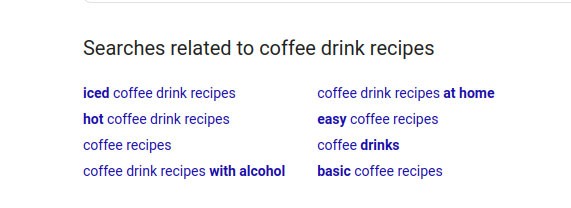
Learning how to use keywords in this way gives the average SEO writer a big leg up and potentially increases their search volume without much extra work.
We hope that you found this article useful.
If you want to know more interesting about your site health, get personal recommendations and alerts, scan your website by Diib. It only takes 60 seconds.
How to Find Long Tail Keywords
Fortunately for web writers, who are trying to find long tail keywords with low SEO difficulty, there are a number of keyword generators out there.
Long-tail keyword generator tools, like Google’s Keyword Planner, produce lists of keywords and keyword phrases that writers can use to write their content. The Google’s keyword generator not only includes results for the searcher’s original keyword phrase but also every related search term, plus the number of searches that each one gets. This will look like this:
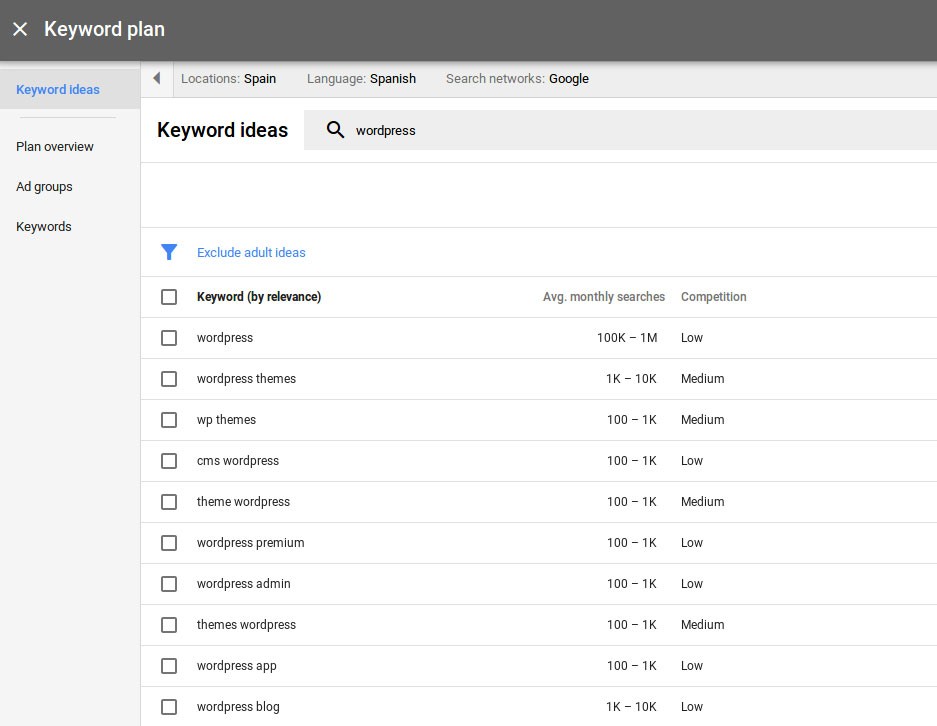
However, Google’s planner tool isn’t the only long-tail keyword generator out there. There are others, some of which, like Google’s planner tool, are free. Others are available by subscription.
Here’s a look at a few of them.
Keyword Surfer is a free tool that works similarly to Keyword Planner. It’s an extension that you can add to Chrome. It actually starts working the minute a person begins searching the web.
Answer the Public allows visitors to do a number of free searches each day. What’s advantageous about this tool is that the results come in question or sentence format most of the time. This is important because this aligns with the trends in voice searches, which are becoming more and more popular. Users who want to do more than the allotted number of free searches each day can pay for a subscription.
Keywords Everywhere is another browser extension that SEO professionals can use on both Firefox and Chrome. The tool offers a pay-as-you-go payment model, which charges searches per keyword batches. Basically, one keyword equals a keyword credit in this system. Users of this tool can get started for as little as $10, which nets them 100,000 credits.
SEMRush has quite a number of features that make it attractive to SEO professionals. This tool allows users to find out what keywords are working well for their competitors, as well as to analyze the budgets and keywords for their competitors’ ads. It additionally gives keyword researchers the ability to create local ad campaign strategies. Finally, the tool allows users to do backlink research, another important component of search engine optimization that often gets overlooked.
Diib®: the Long-Tail Keyword Guru’s
If used correctly, content marketing allows marketers with small budgets to attract customers to their sites, provided that these SEO writers understand how long-tail keywords work. Fortunately, there are plenty of tools on the market that allow SEO writers to find suitable keyword phrases for their content. The Diib keyword tool allows you to search not only your best long-tail keywords, but those of your top 6 competitors. Here are some of the features you’ll love:
- Use the keyword and backlink competitor research tools to find what keywords your competitors are ranking for and create content around those keywords.
- Use Diib® to understand key metrics, like bounce rate and returning visitors, for your specific content.
- See how your Facebook page followers like content you share.
Click here for a free 60 second site analysis or call 800-303-3510 to chat with a Growth Expert today!
FAQ’s
You can find relevant long-tail keywords using keyword research tools like SellerApp keyword research tool and search term reports from Google or Amazon (if you are an Amazon seller).
Long-tail keywords are still very relevant in today’s most effective SEO campaigns. They can save you money and give you a competitive advantage over your competitor.
To find the exact phrase you’re looking for, use quotation marks. There are several ways to search for multiple keywords. Using a keyword tool can help you to isolate those words and phrases you are seeking.
We recommend 3-4 keywords per page, even if they are close variations. To have more would make your content feel and sound crowded.
A primary keyword is going to be the primary purpose of your article and is often used in the name of the page and article. It is also the first keyword used on the page, before other keywords. Your primary keyword should be used in the article title.



